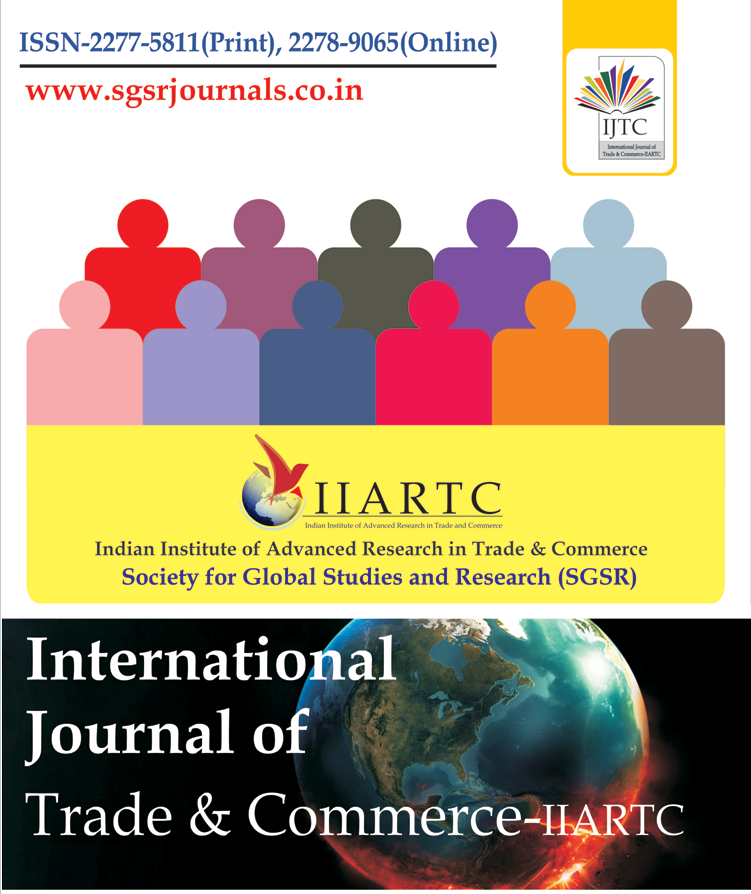Home ⇨ International Journal of Trade & Commerce-IIARTC

International Journal of Trade & Commerce-IIARTC
Impact Factor (IF):5.135 (COSMOS), IF:7.249 (ISRA), IF:3.721 (ISI)
ISSN:2277-5811 (P), ISSN:2278-9065 (O)
Frequency: Half Yearly
A Study of Investment Behaviour about Middle-Class Group Families towards Different Types of Opportunities
of our country is increasing rapidly among the countries of world where 1.3 Billion people and middle group covers 45% of the population. The remaining 59% people come under poor category and 1% in rich category. The middle group is divided into lower and higher. Lower middle group family income is less than 25000 per month and the upper middle class earn 50k to 150k monthly (As on 2018-19). Middle group population is the vital component for Indian economic development. They effect demand and supply of need and comfort products at a great extent. Their saving and investment shape gets influenced by their predicted needs for future; provide extensive scope for researchers due to larger impact on the investment bazaar. Through this research paper, researcher throws the light on investment behaviour adopted by middle group families, included groups associated in either service or business, whose income exist between two lakhs to five lakhs p.a. main purpose of selecting certain income group is to know that how to manage their investment avenues with small or limited income after spend their all expense. The reason of this study is to find out answer of some genuine questions for their choices of investment’s instruments in money market and capital market, real estate, commodity market, derivatives market etc., investment pattern implemented in a definite manner and objectives behind selecting a certain investment’s instrument. Investment is one the main key issue for middle group families as they have small saving today are to meet their needs for future expenses. As a conclusion, this research paper study helps to examine that how they manage their savings and expenses, risk facing capacity and other elements which influence their investment decision.
Author:Riyazuddin
Abstract:of our country is increasing rapidly among the countries of world where 1.3 Billion people and middle group covers 45% of the population. The remaining 59% people come under poor category and 1% in rich category. The middle group is divided into lower and higher. Lower middle group family income is less than 25000 per month and the upper middle class earn 50k to 150k monthly (As on 2018-19). Middle group population is the vital component for Indian economic development. They effect demand and supply of need and comfort products at a great extent. Their saving and investment shape gets influenced by their predicted needs for future; provide extensive scope for researchers due to larger impact on the investment bazaar. Through this research paper, researcher throws the light on investment behaviour adopted by middle group families, included groups associated in either service or business, whose income exist between two lakhs to five lakhs p.a. main purpose of selecting certain income group is to know that how to manage their investment avenues with small or limited income after spend their all expense. The reason of this study is to find out answer of some genuine questions for their choices of investment’s instruments in money market and capital market, real estate, commodity market, derivatives market etc., investment pattern implemented in a definite manner and objectives behind selecting a certain investment’s instrument. Investment is one the main key issue for middle group families as they have small saving today are to meet their needs for future expenses. As a conclusion, this research paper study helps to examine that how they manage their savings and expenses, risk facing capacity and other elements which influence their investment decision.




